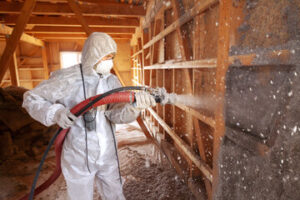Movers are experts at moving heavy, large, and fragile items. They are trained to work safely and efficiently. They also have a minimum liability insurance coverage and a way to file claims if they damage your furniture.

A mover is a person or company that transports household and office goods. They are typically insured and licensed by the federal government. Visit https://moversmeridianid.com/ for more details.
Moving to a new state can be intimidating, but it can also be a great opportunity to start fresh. It’s a chance to learn more about yourself, reform your social circle, and experience a new culture. In addition to these benefits, relocating to a new state can also provide you with a number of financial opportunities.
For example, you may be able to find cheaper rent in a smaller city, or your money may go further in a state with low taxes and fewer costs. You may even be able to save more for retirement. However, it’s important to do your research and find out what kind of lifestyle you can afford in your new state.
One of the most obvious reasons for relocating to a new state is to seek a better job opportunity. In fact, the vast majority of people move to other states for work-related reasons. While it’s important to have a job lined up before you move, it can be difficult to secure one after relocating to a new state.
The best way to find out about the local job market in your new state is to talk to friends and family members who live there. This can help you figure out the best area to relocate to and whether it’s a good fit for your skills and interests. You can also look at the local economy, unemployment rate, and wages to get a better idea of what to expect when you relocate.
You should also make sure to update your financial institutions that you’re relocating to a new state. This includes your bank, credit card company, and any investments or retirement accounts. You should also notify your insurance providers and ask about a transfer of coverage.
It offers a change of pace.
Whether you’re tired of your current job or just want to try something new, moving to a new state can be an exciting opportunity. Depending on the state you’re moving to, there may be more job opportunities, better wages, or even a different climate that suits your needs more.
If you’re moving across the country, it’s important to book travel arrangements well in advance for the best rates. If possible, you should also reserve rental cars or buy plane tickets in advance for ease of transportation. This will also help you avoid any potential delays in paperwork, utility start dates, or packing delivery times.
It’s also important to take the time to research your new city before making the move. Find out if your new neighborhood has good public schools, local restaurants, and recreational activities. You can use online resources to test commute times and map routes. If you’re moving with children, research nearby childcare centers and doctors. Lastly, if you’re going to be renting or buying a home, be sure to check its proximity to parks and trails.
Another benefit of moving is that it gives you the chance to clean out your possessions. It’s a great time to reorganize your belongings and sift through them to keep only the things that truly matter to you. This process can also be therapeutic, as you’ll be able to let go of items that no longer serve your purposes. Using a service can make the process of getting organized easier by allowing you to pack your belongings at your own pace and transport them safely from place to place.
It offers a change of scenery.
Whether you’re moving to pursue a new career, looking for more opportunity, or just need a change of scenery, relocating to a new state can give you the fresh start you need. You’ll be able to leave behind all of the drama from your old life, as well as those toxic friends and family members who drain you of your energy.
It’s also the perfect time to sift through your belongings and get rid of items that are no longer useful or important to you. Many people find that they have a tendency to hang onto things out of habit, but relocating gives you the chance to really examine your items and decide what is truly worth keeping.
Another benefit of relocating is that it can offer you the chance to make a more personal connection with your community. You’ll be able to meet new people and explore your surroundings, making for a more enjoyable lifestyle. Additionally, you’ll be able to discover hidden gems and unique experiences that you may have otherwise missed.
To help you make the most of your move, plan ahead and research your new state before you arrive. Find out how much income tax you’ll be paying, what the cost of living is like, and which schools are best suited to your children’s needs. Schedule your travel plans far enough in advance to take advantage of discounts, and be sure to book overnight lodgings for the days when you’ll be transporting your boxes. Additionally, be sure to check the weather forecast and avoid traveling during bad conditions.
It offers a change of lifestyle.
A major lifestyle change that comes with relocating to a new state is the opportunity to explore a new culture. You can try out different restaurants, visit the museum, or just immerse yourself in a new city’s unique vibe and get to know your surroundings. You can even make new friends and expand your social circle. This can help you learn to live a new way of life, define your priorities and gain a fresh perspective on your life.
If you are moving to a new state for work, you may want to take some time before your move to research the job market and opportunities there. You may also want to look into the cost of living, weather conditions and any other factors that might affect your daily routine. For instance, you might want to know if the new state is prone to any natural disasters and how that might affect your insurance costs.
Another reason why you might want to consider relocating is that it can help you break out of a stagnant routine. Many people can become comfortable with their surroundings, leading to them taking their environment and their family for granted. This can be especially true when you are surrounded by workmates and coworkers, which can lead to feelings of resentment and boredom. Moving to a new state can give you the push that you need to start over and develop a more fulfilling and rewarding life.
Another lifestyle change that comes with relocating is the opportunity to sift through your belongings and make a clean break from those that are no longer serving you. You can use online marketplaces to offload items you no longer need, such as appliances or furniture. You can also hire a freight trailer company to ship your belongings, which is an excellent option for those who are moving long distances.
It offers a change of perspective.
Whether it’s a new job or a new lifestyle, moving to a different state offers a change of perspective. You’ll be able to see things in a new light, and you might even have more energy to do all the things that you want to do.
The verb move means to progress toward a certain state, activity, or opinion: She moved us to laughter and tears with her performance. It can also mean to affect: The tale of the famine moved many people to pity.
It can also mean to transfer a piece in a game, such as chess or checkers: The player moved the queen into position. It can also mean to rotate something, especially machinery: The wheels of the car were moved into position.
The process of moving can be stressful, but there are steps you can take to make it easier on everyone. For example, you might book temporary housing in your new city or rent an apartment before moving. You can also research your new neighborhood’s proximity to schools and other essential services, like parks and trails. You can also book flights or rental cars in advance to get the best rates. Lastly, be sure to hire professional movers to transport your belongings.








